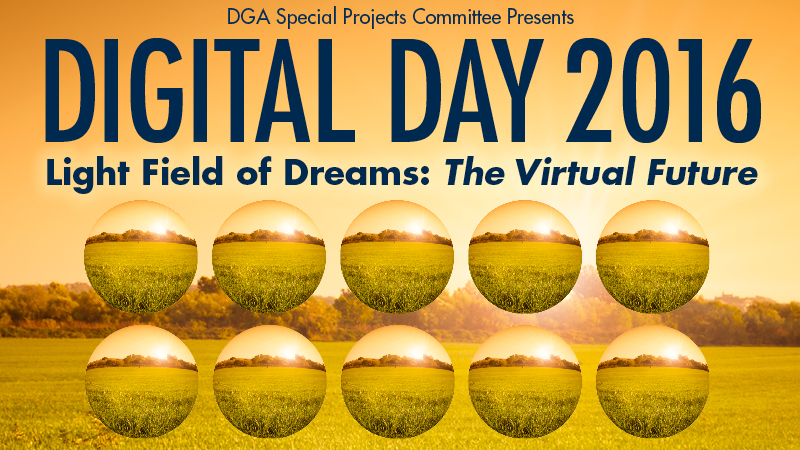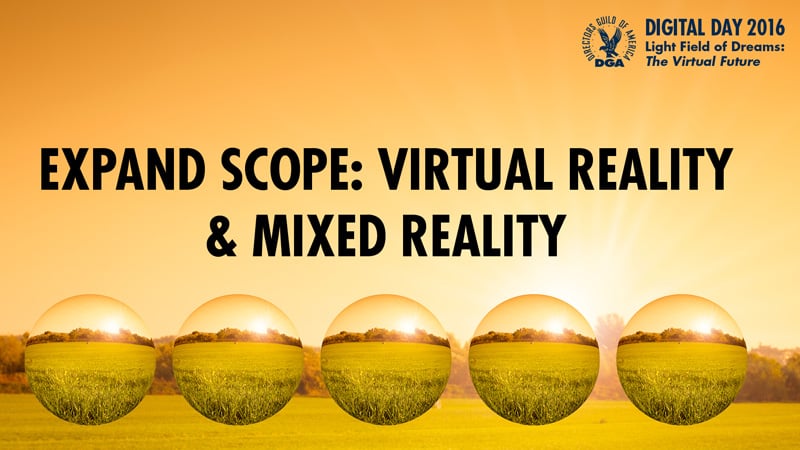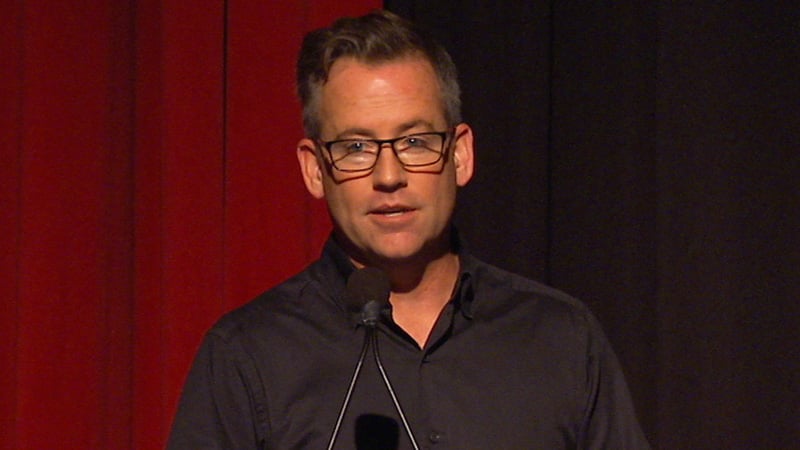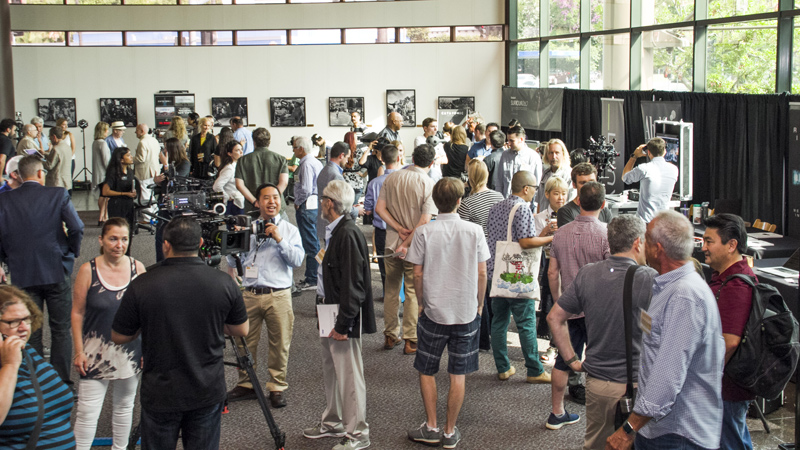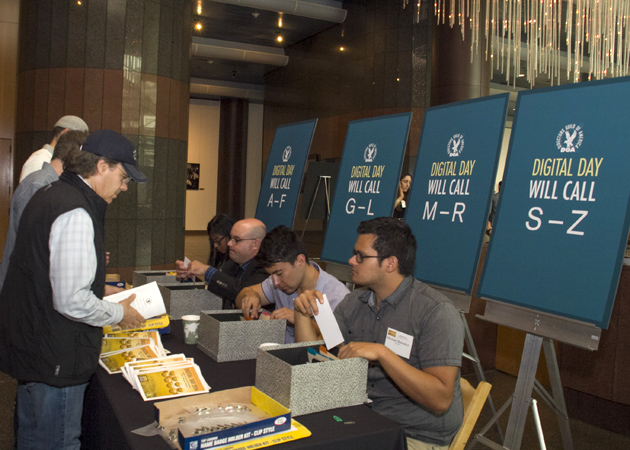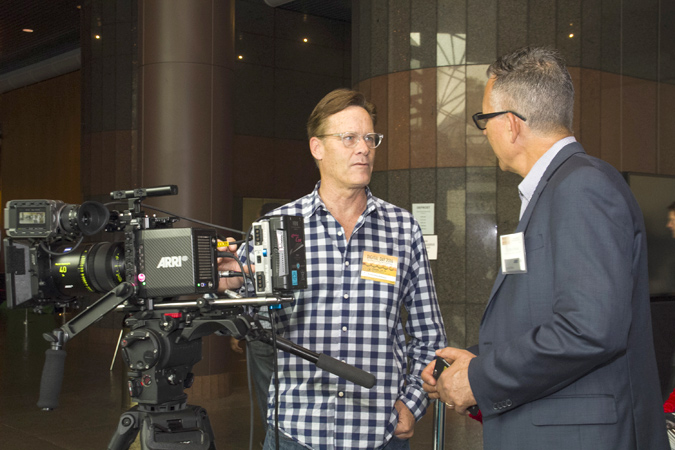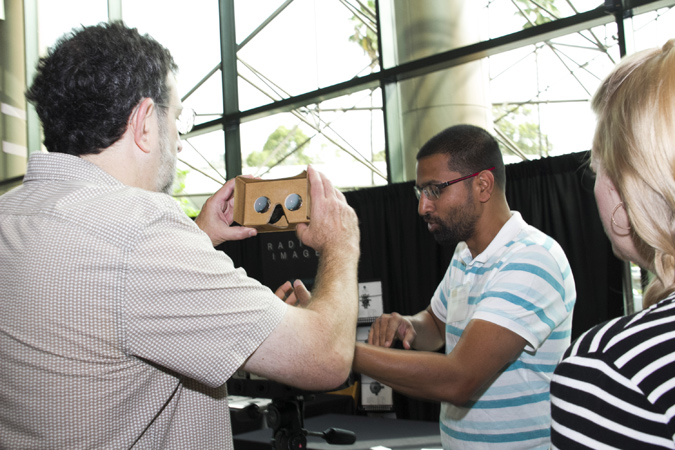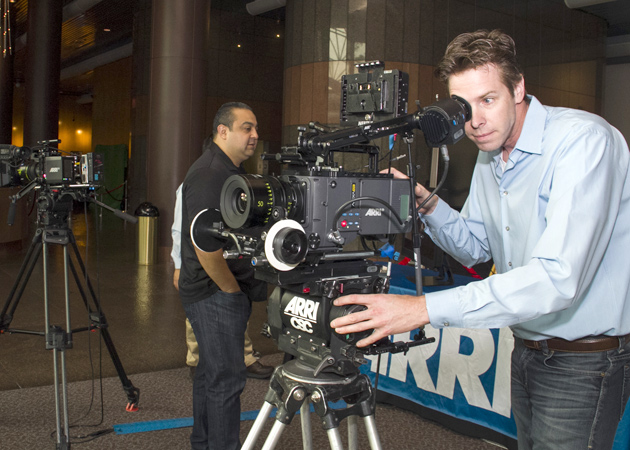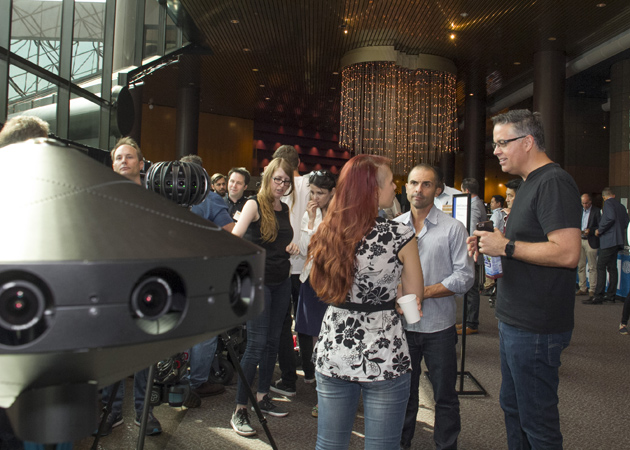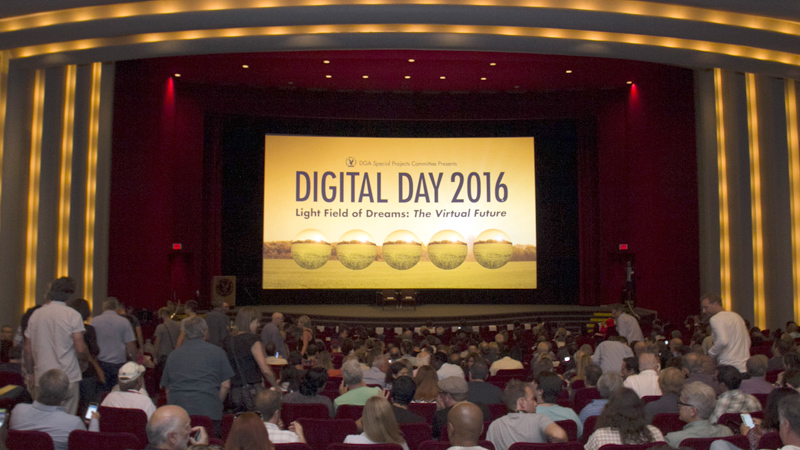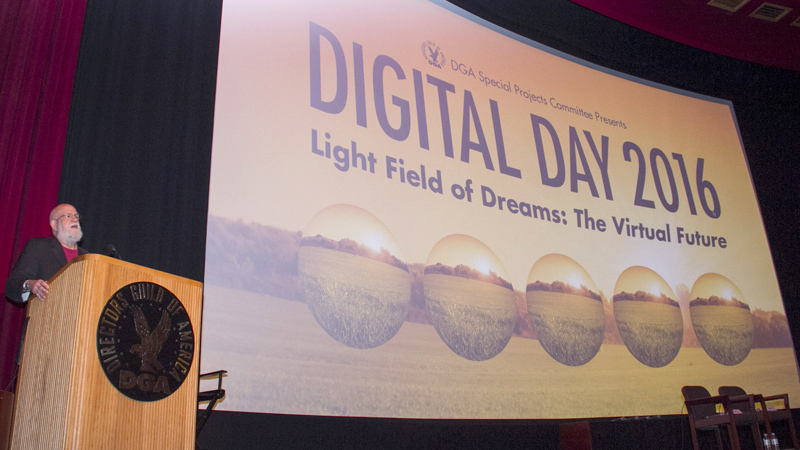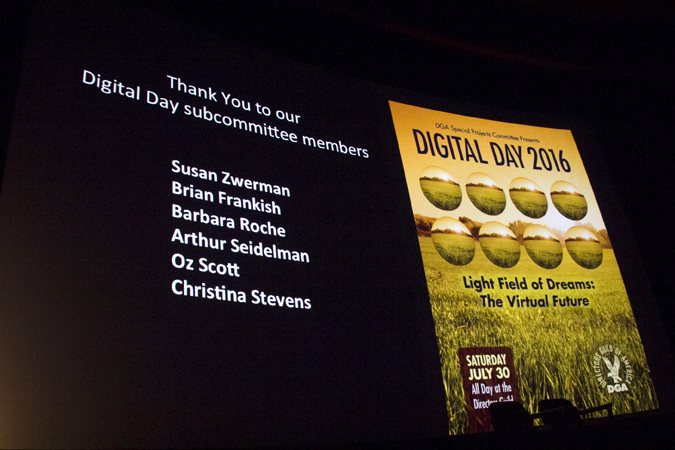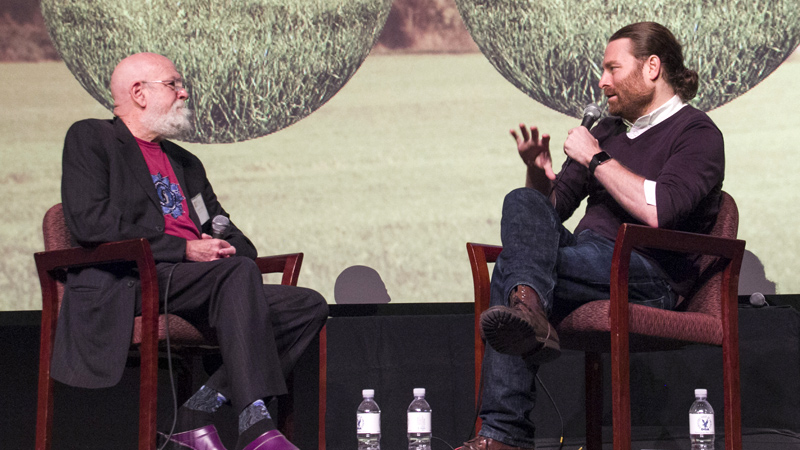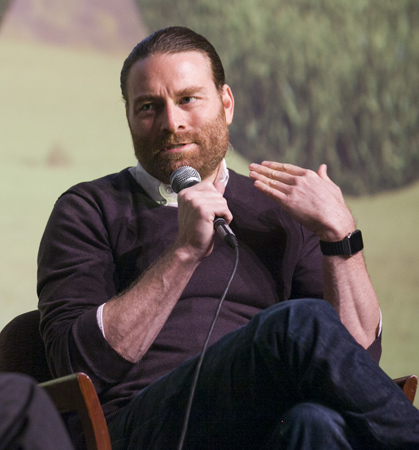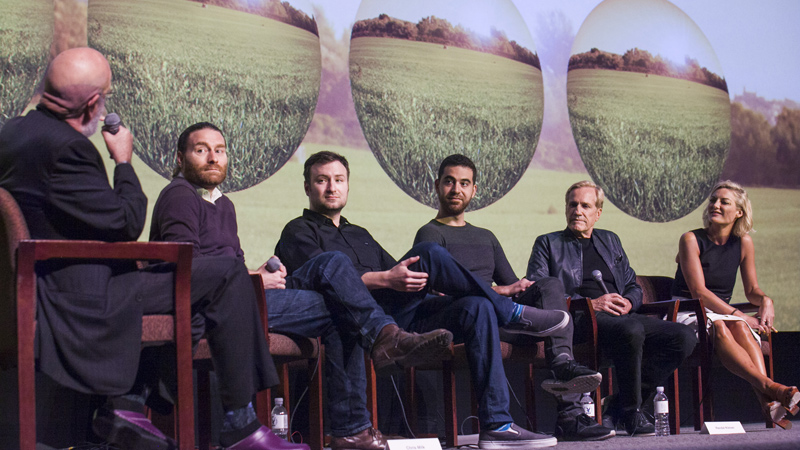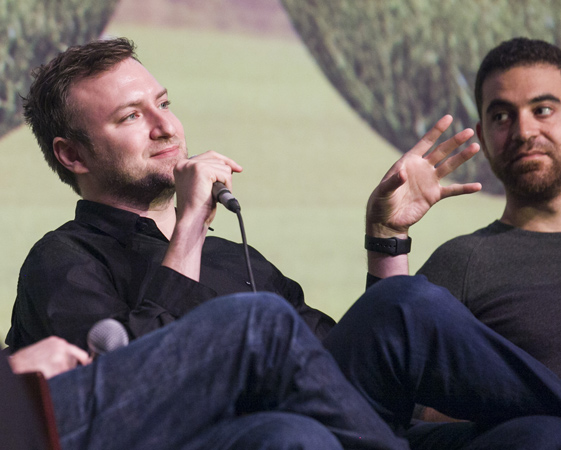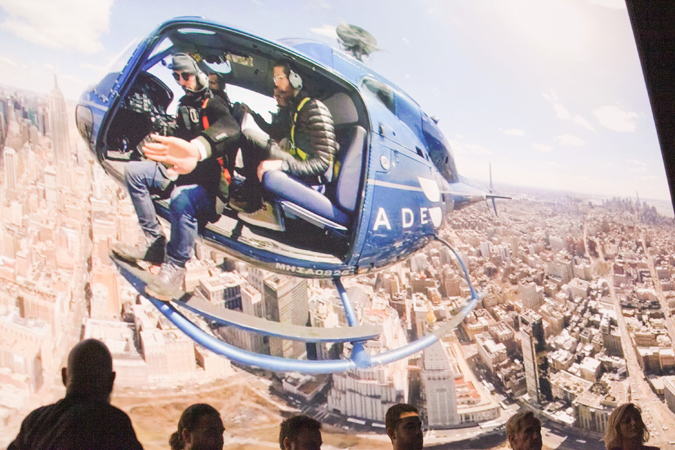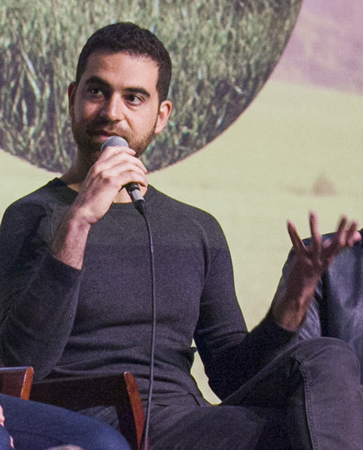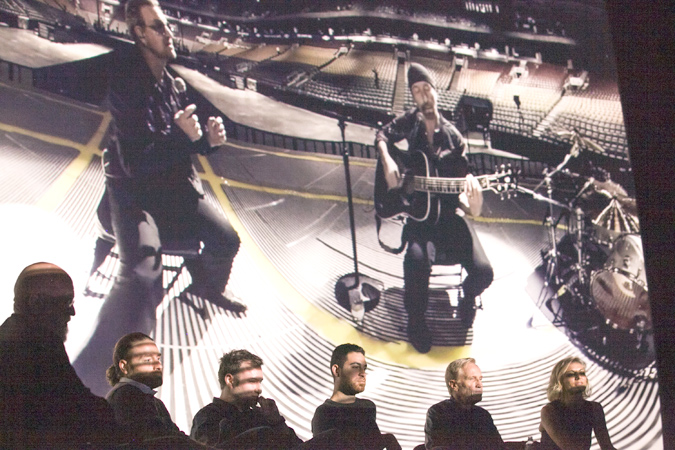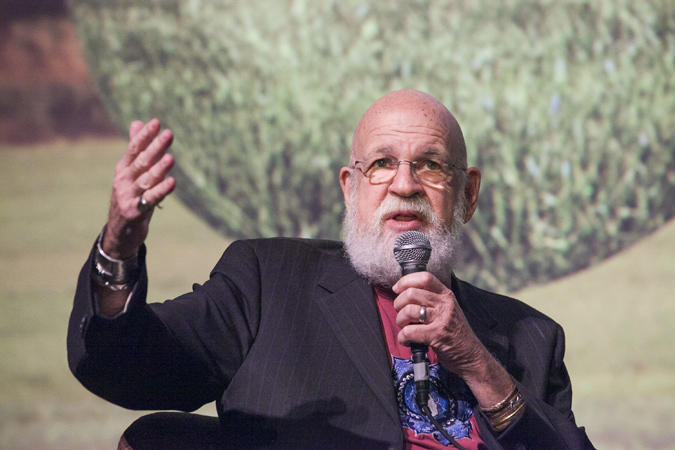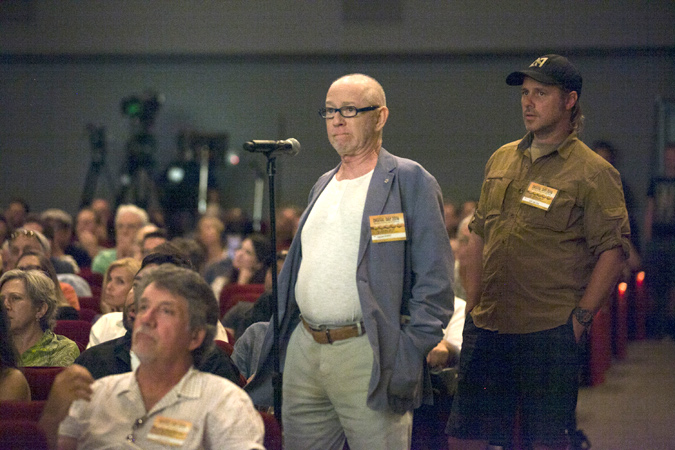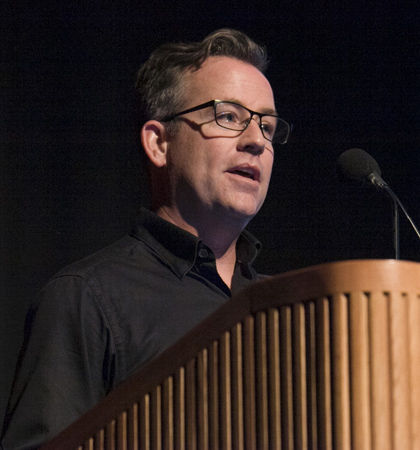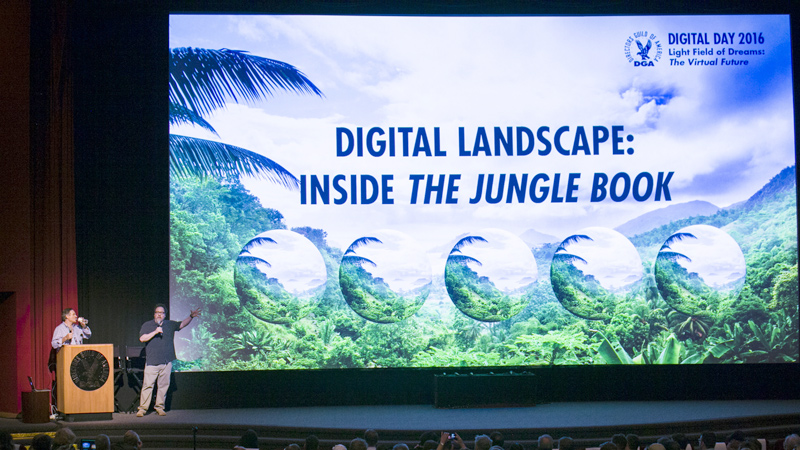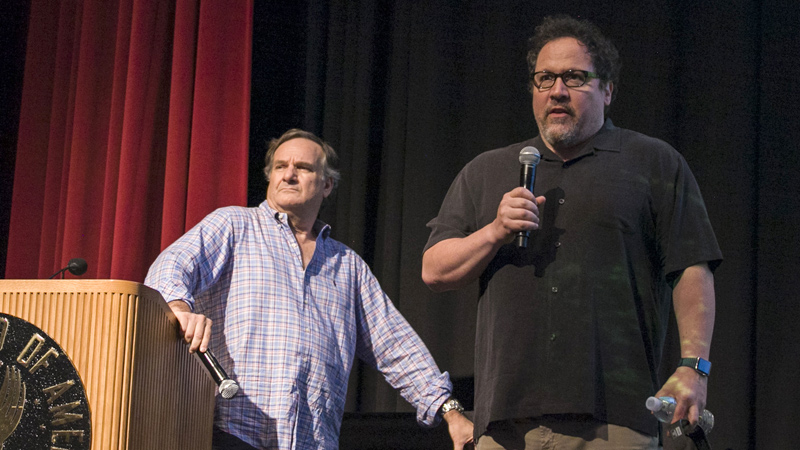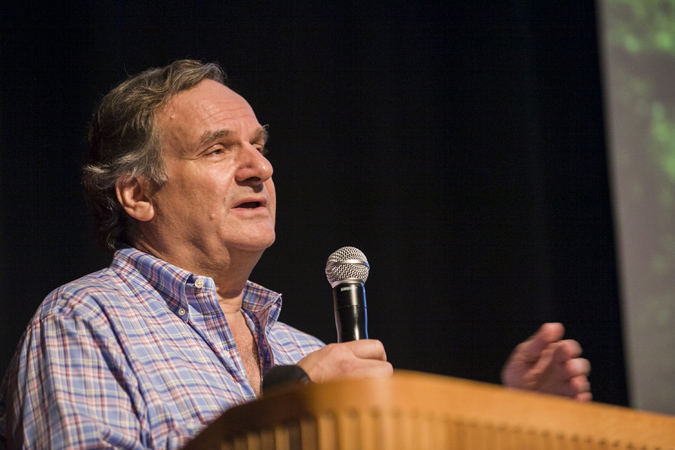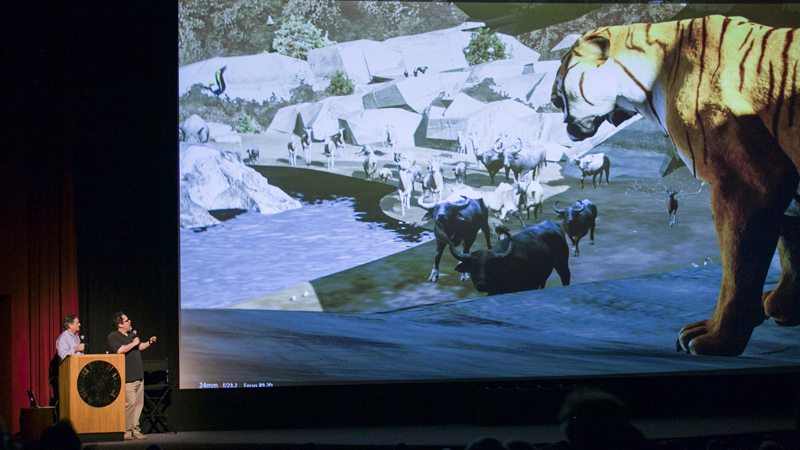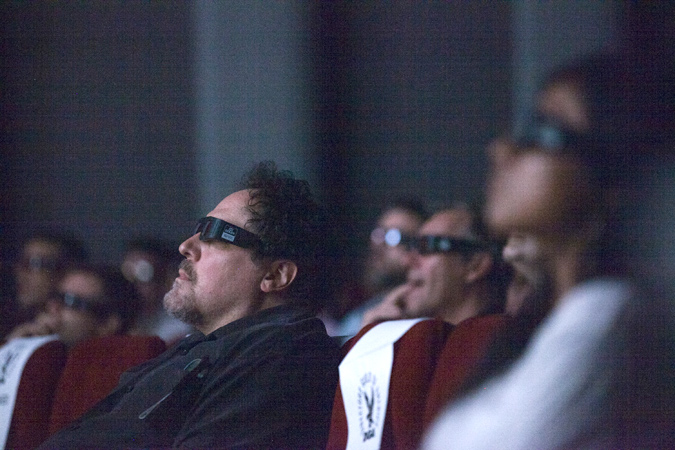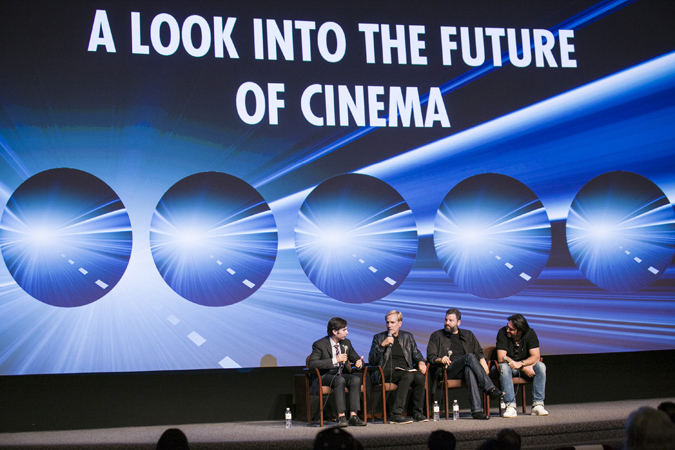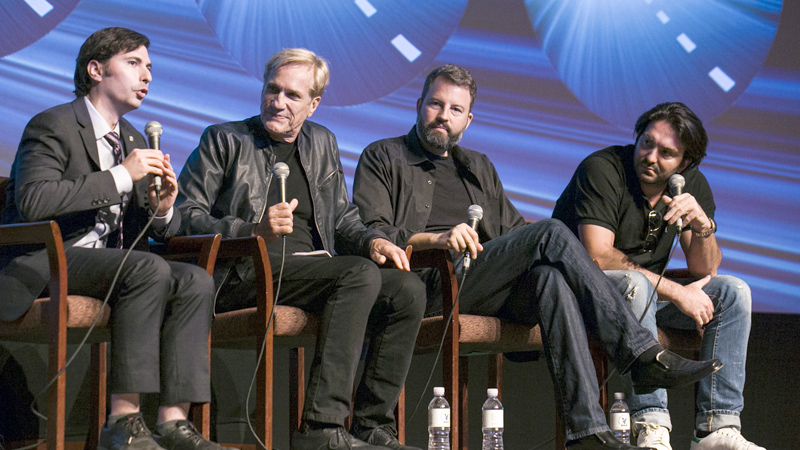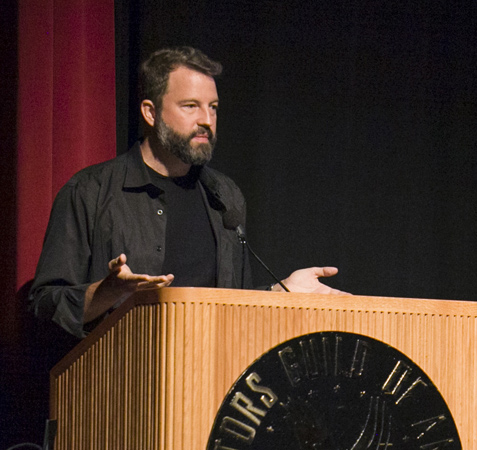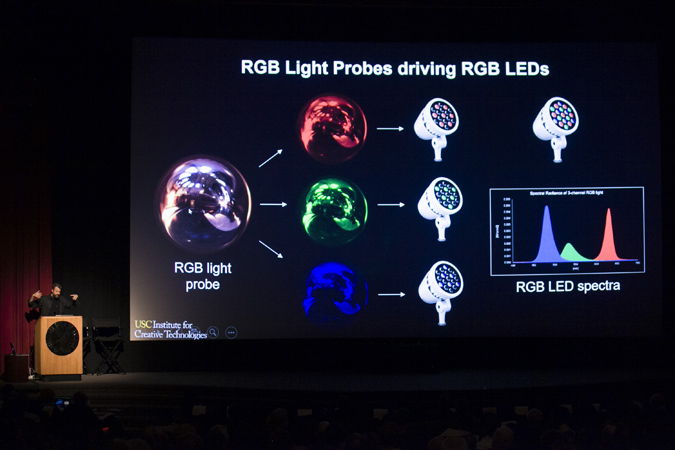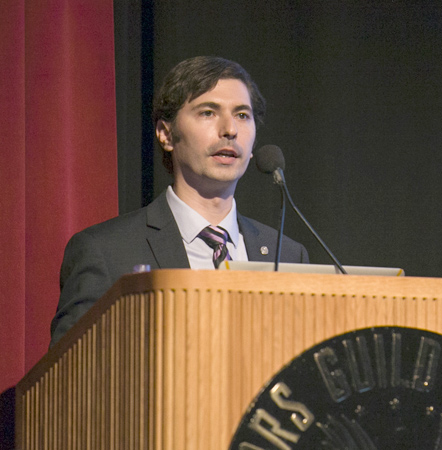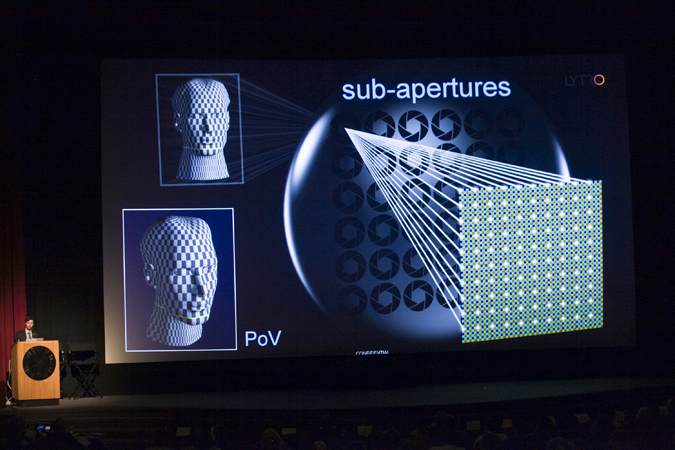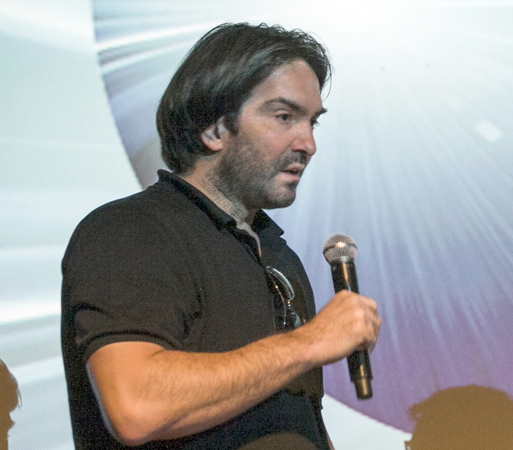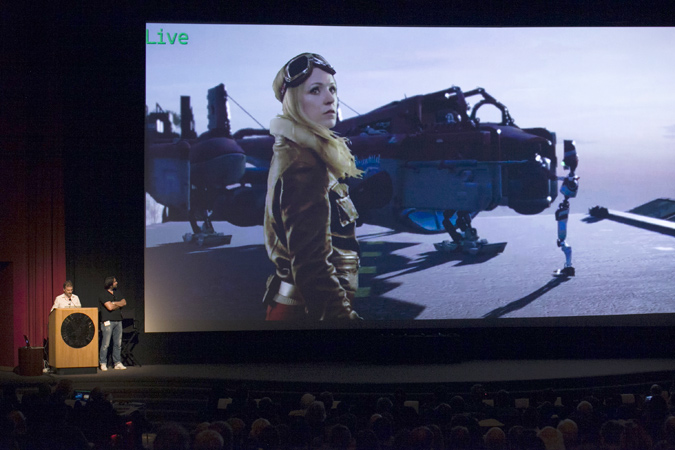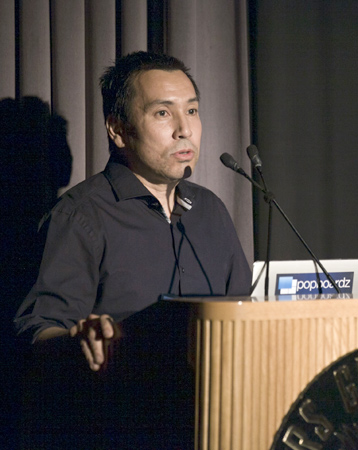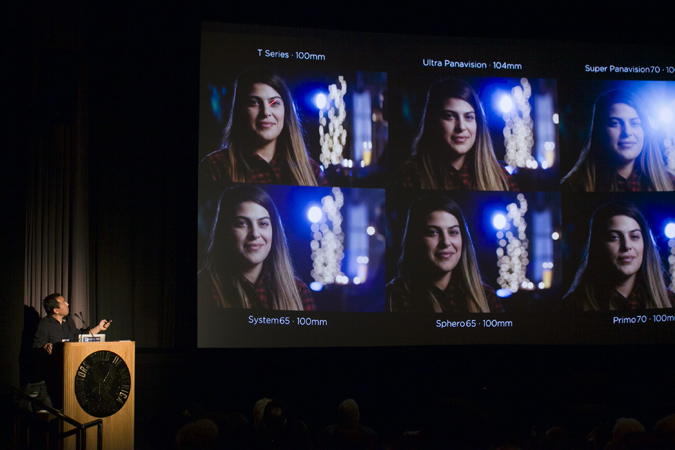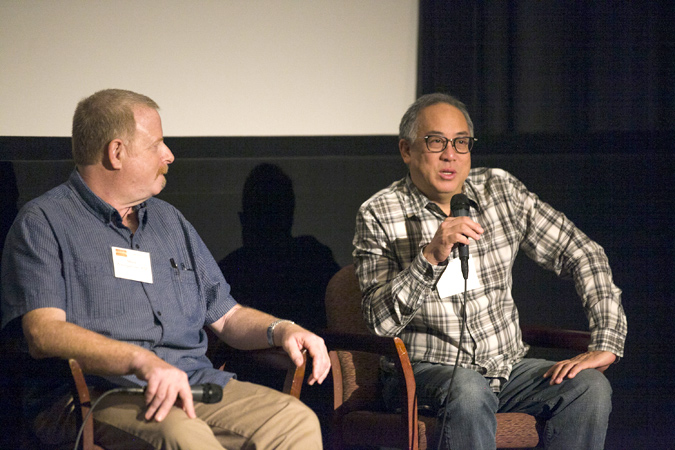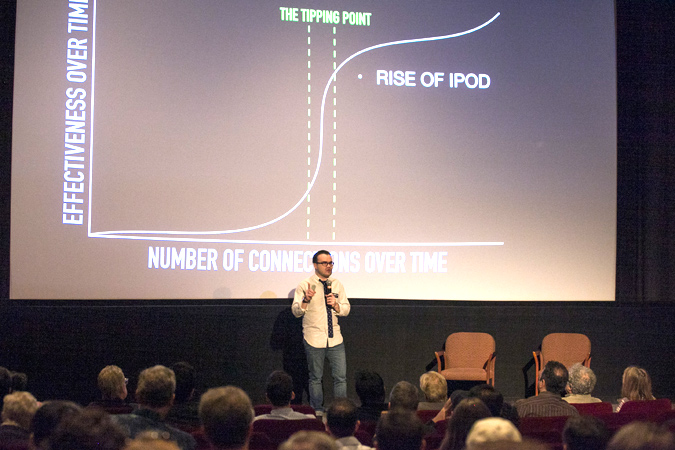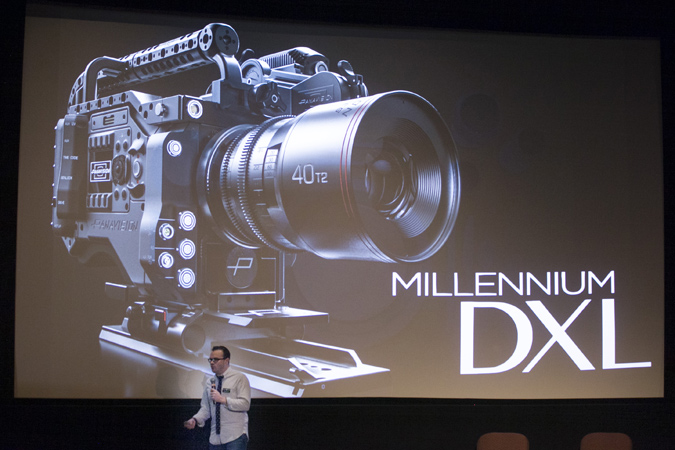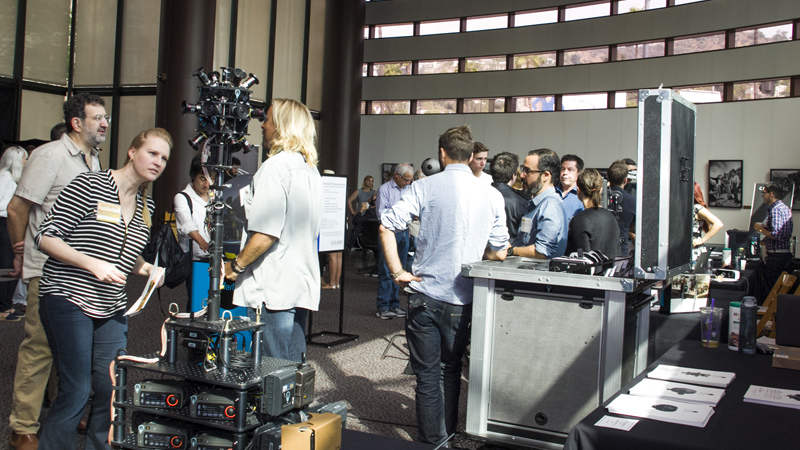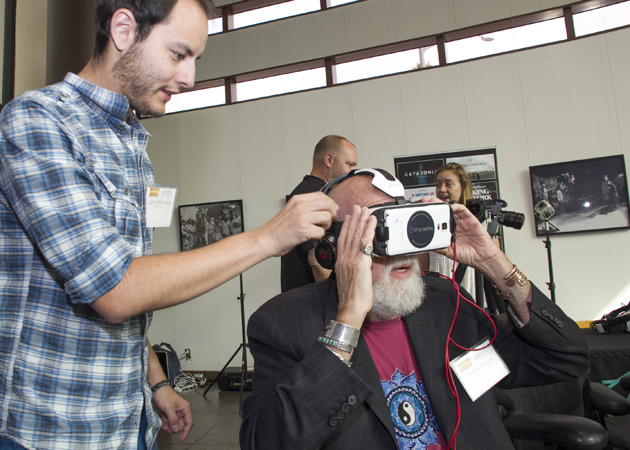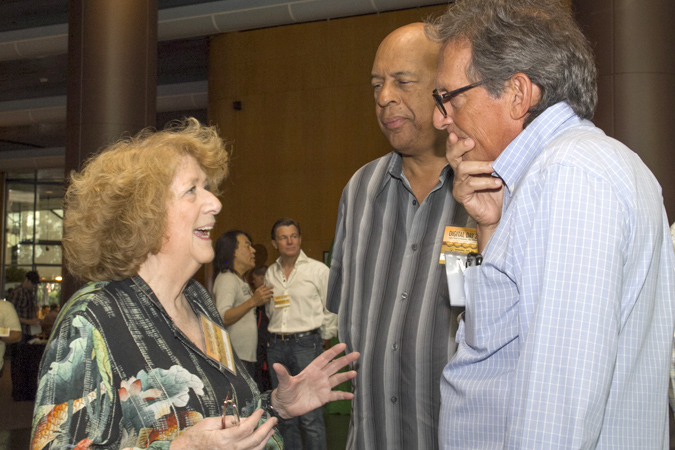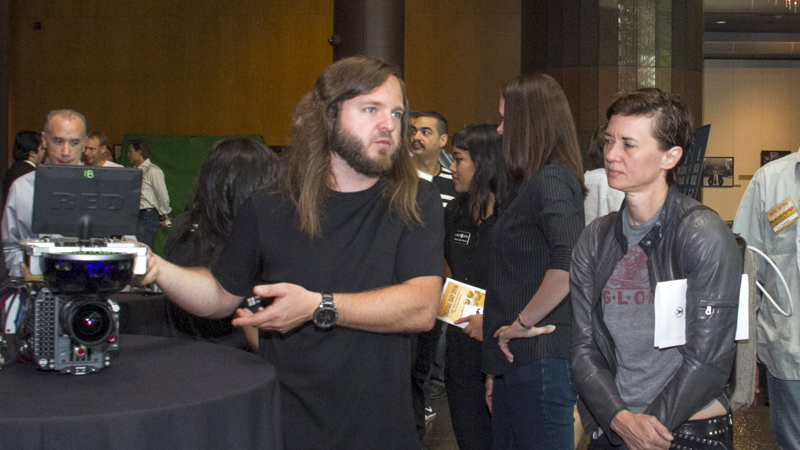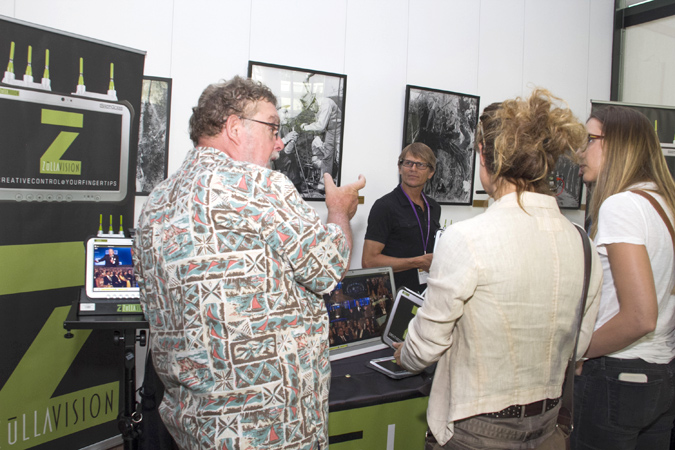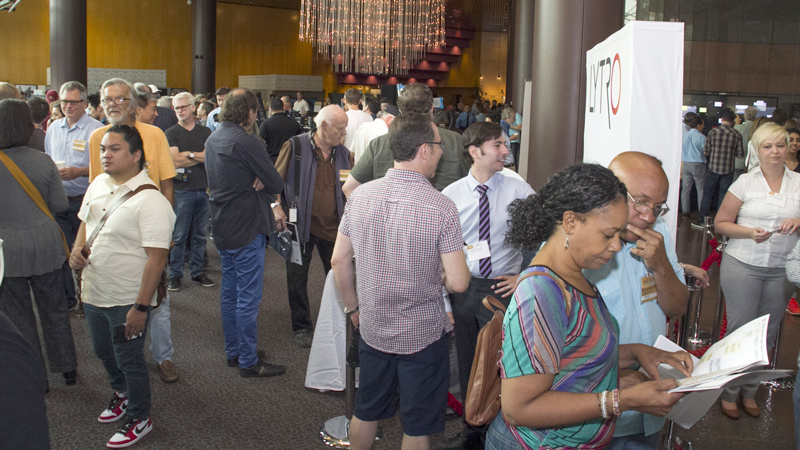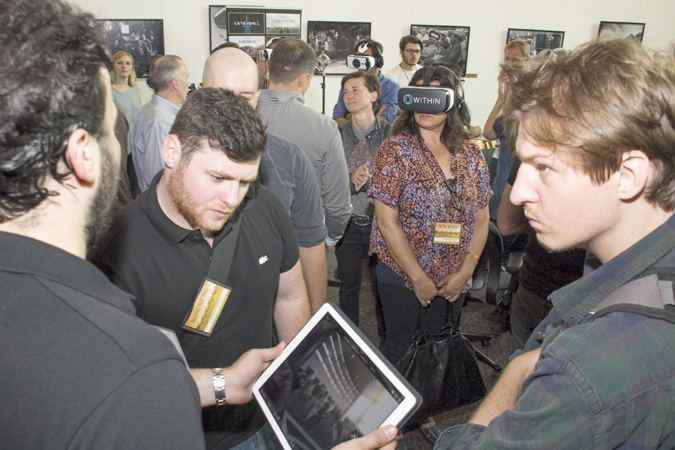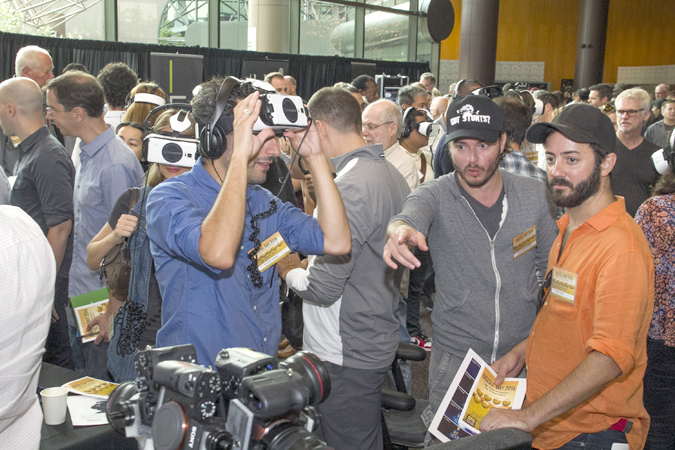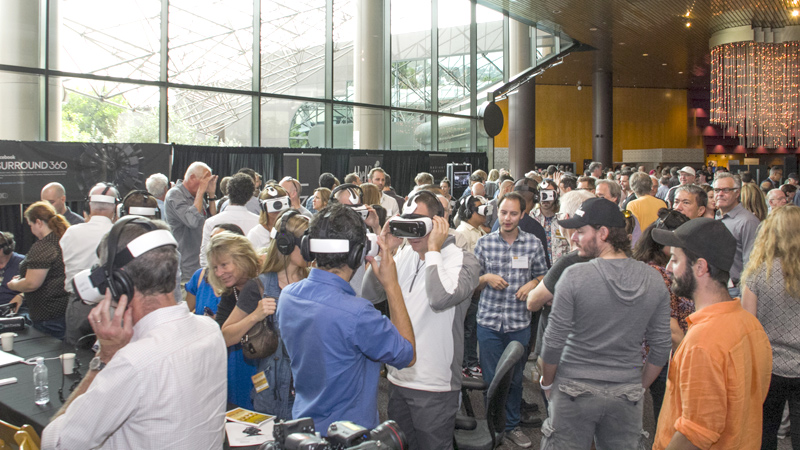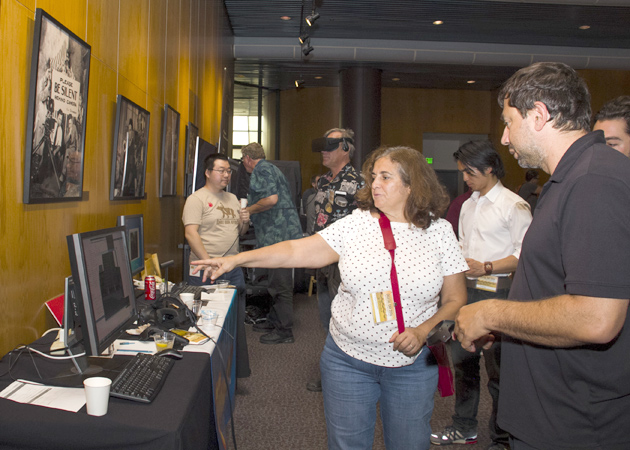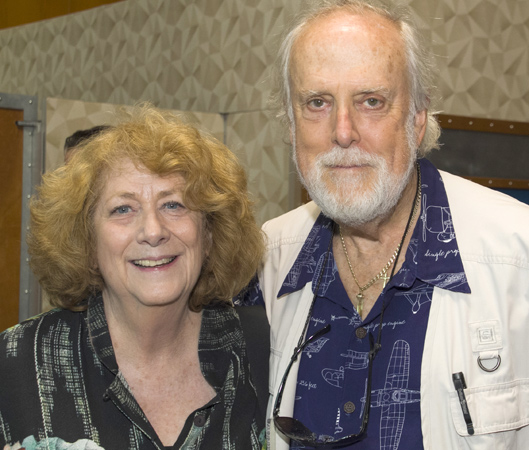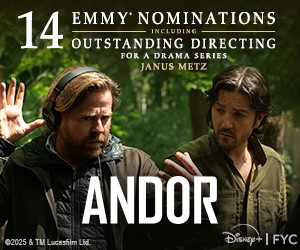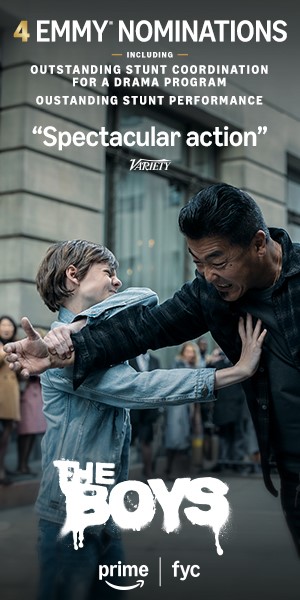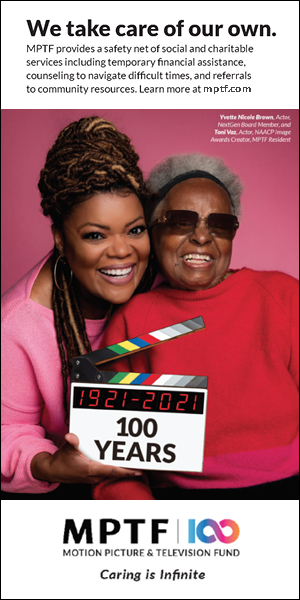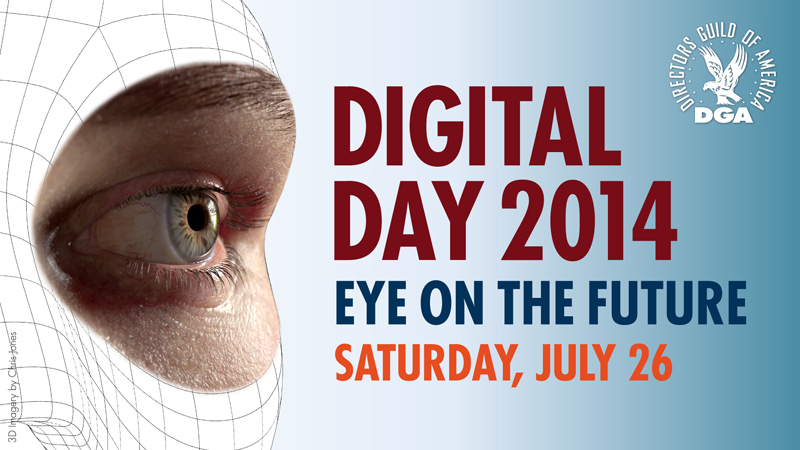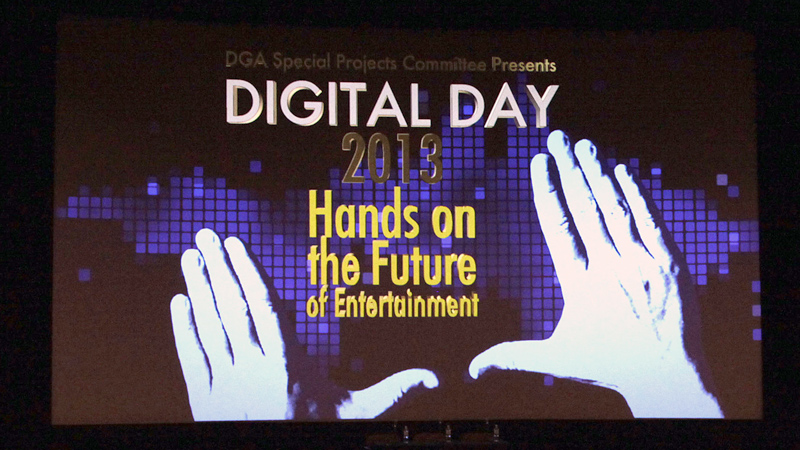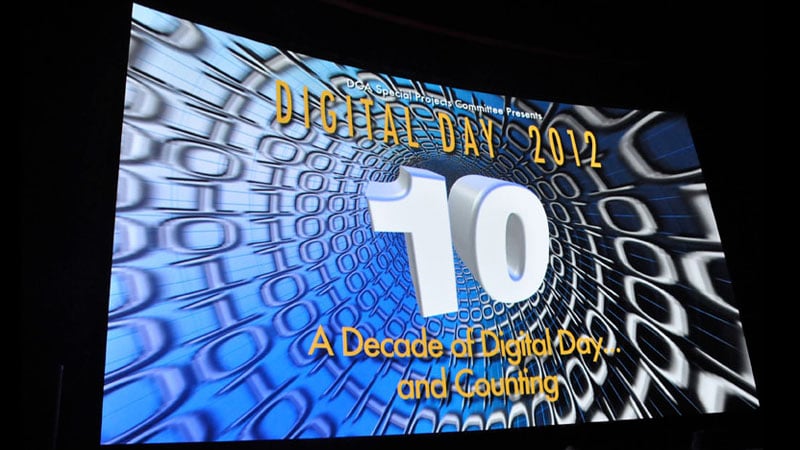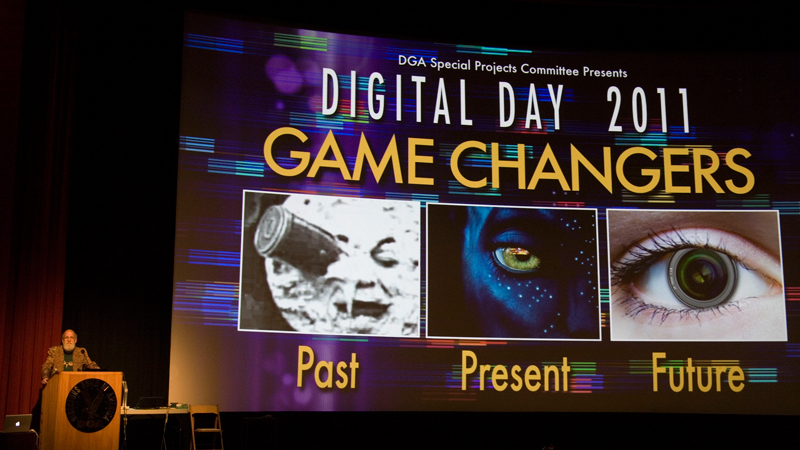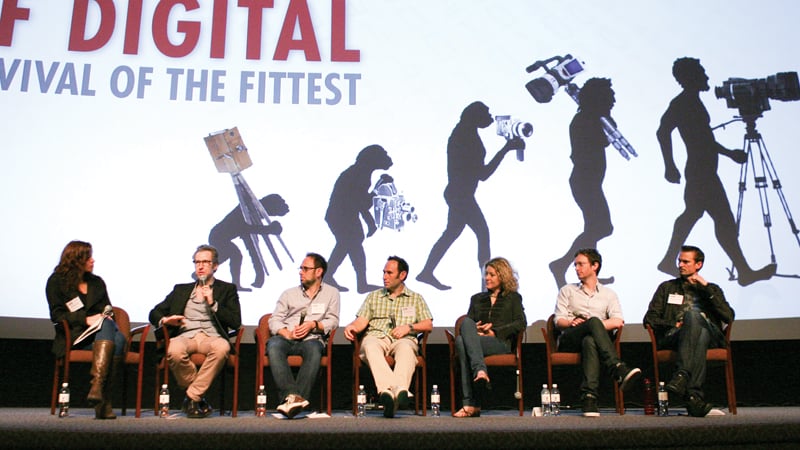photos by Byron Gamarro
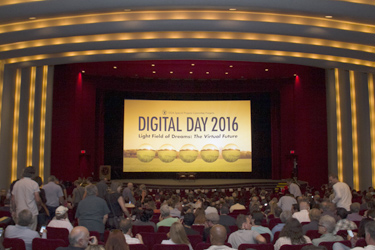 On Saturday, July 30, more than 300 DGA members joined other industry professionals for a day of learning and networking during the 14th annual Digital Day at the DGA. Held at the Guild’s Los Angeles Theater complex, the annual symposium of cutting-edge technologies featured presentations, exhibits, hands-on demos and much more. This year's event “Light Field of Dreams: The Virtual Future” focused on the creative, technical and business issues surrounding new technologies and provided the opportunity for DGA members and guests to hear from experts in the field.
On Saturday, July 30, more than 300 DGA members joined other industry professionals for a day of learning and networking during the 14th annual Digital Day at the DGA. Held at the Guild’s Los Angeles Theater complex, the annual symposium of cutting-edge technologies featured presentations, exhibits, hands-on demos and much more. This year's event “Light Field of Dreams: The Virtual Future” focused on the creative, technical and business issues surrounding new technologies and provided the opportunity for DGA members and guests to hear from experts in the field.
Following the welcome from DGA Special Projects Committee Chair Jeremy Kagan (SHOT) and a preview of the day’s offerings from Special Projects Digital Day Subcommittee Chair Randal Kleiser (Defrost), the day kicked off with the multi-part discussion, Expand Scope: Virtual Reality & Mixed Reality.
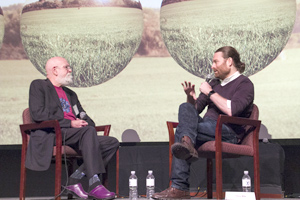 Expand Scope: Virtual Reality – Part 1
Expand Scope: Virtual Reality – Part 1
The first presentation featured an in-depth conversation about virtual reality as a new fundamental technology that is continuously developing and being used by filmmakers as a tool for storytelling with Within’s Founder/CEO and Here Be Dragons’ Founder/Creative Director Chris Milk. With moderation by Kagan, Milk discussed how virtual reality is something bigger than just a new medium; it is evolving the storytelling language while those working in it are simultaneously building the format in which the story is being told. Milk touched on the idea of two parallel paths occurring in the world of virtual reality: cinematic VR and real-time render VR; how evolutions in storytelling and the realism of cinema will continue to converge in VR in the future.
An accomplished visual artist, Milk is known for weaving artistic and technological innovations in pursuit of a new aesthetic. His acclaimed interactive projects include Wilderness Downtown (with Arcade Fire), The Johnny Cash Project, and The Treachery of Sanctuary. He has also released projects on the Within platform that were created in partnership with The New York Times, The United Nations, Apple, Vice and NBC, among others. Milk has been a DGA member since 1999.
DGA Members, CLICK HERE to watch exclusive video of this interview.
 Expand Scope: Virtual Reality – Part 2
Expand Scope: Virtual Reality – Part 2
The next presentation was a panel discussion about how to build narratives in a new medium for storytelling featuring Directors David Gelb (Chef’s Table), Paul Raphaël (Lebron James—Striving for Greatness), Lucy Walker (A History of Cuban Dance), Chris Milk (Clouds Over Sidra) and Randal Kleiser (Defrost). In a conversation again moderated by Kagan, these artists explored the transition from traditional storytelling, working within a sphere, and using the medium to tell new stories that could not be communicated before.
A DGA member since 2013, David Gelb has directed a variety of both fiction and non-fiction projects, most notably the critically acclaimed documentary Jiro Dreams of Sushi. His Netflix series Chef’s Table ‑ a continuation of the style seen in Jiro Dreams of Sushi, but set in the kitchens of other visionary chefs around the world. ‑ was nominated for 3 Emmys this year, including Best Non-Fiction Series, Best Music in a Series, and Best Directing.
Alongside Director Félix Lajeunesse, Paul Raphaël is the co-founder and creative director of Felix & Paul Studios, a company is dedicated to storytelling through live-action virtual reality. They have directed and produced both original content (the Nomads series, LeBron James—Striving for Greatness and Strangers) and new experiences in collaboration with existing properties such as Jurassic World: Apatosaurus. Their highly-anticipated upcoming project, featuring President Obama, marks the first time a sitting President has participated in a virtual reality experience.
In addition to serving as DGA Special Projects Digital Day Subcommittee Chair, Kleiser wrote and directed the 360-degree virtual reality series Defrost. His other directing credits include the feature films Grease, The Blue Lagoon, Flight of the Navigator and Honey, I Blew Up the Kid. A DGA member since 1974, Kleiser also serves as an alternate member of the DGA Western Directors Council and National Board, and as a member of the Science and Technology Council of the Academy of Motion Picture Arts and Sciences.
(See video from this presentation in the gallery below.)
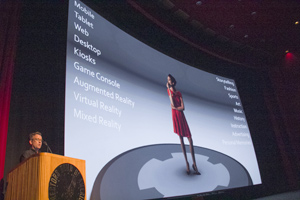 Expand Scope: Mixed Reality
Expand Scope: Mixed Reality
The final presentation before the lunch break featured Microsoft’s Holographic Video Team Leader Steve Sullivan, who deciphered the world of Mixed Reality, and discussed how to embrace real humans for Virtual Reality and Mixed Reality storytelling using Holographic Video developed for HoloLens. During his talk Sullivan covered subjects that included Microsoft’s latest technology and how it will change the way people create, offer tools for previsualization, and more.
Sullivan’s Holographic Video team creates volumetric video of people and performances for mixed reality, virtual reality, and traditional 2D experiences. Prior to joining Microsoft, he was Senior Technology Officer for ILM/Lucasfilm where he led Research & Development across the Lucas Divisions, contributed to over 70 films and received three Academy Awards for Technology for match-moving, image-based modeling and on-set motion capture.
(See video from this presentation in the gallery below.)
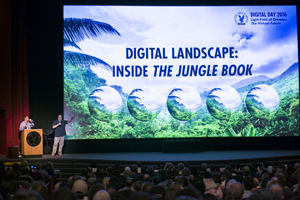
Digital Landscape: Inside The Jungle Book

The afternoon sessions began with a look inside the cutting-edge VFX used in Director Jon Favreau’s The Jungle Book. Presented by Favreau and 2nd Unit Director/Cinematographer and VFX Supervisor Rob Legato, the presentation revealed how they brought Rudyard Kipling’s classic adventure tale to life using various methods in pre-viz and production.
A DGA member since 1997, Favreau currently serves as the Guild’s 5th Vice President. He made his feature film directorial debut with Made, which he wrote and produced. His other credits include Iron Man, Iron Man 2, Cowboys & Aliens, Elf, Zathura, and Chef. He also served as the creator, producer and host of the Emmy-nominated IFC series, Dinner for Five.
Rob Legato is a Visual Effects Supervisor, 2nd Unit Director and Director of Photography. His VFX work garnered him his first Academy Award nomination on Ron Howard’s Apollo 13 and he would go on to VFX Oscars for his contributions to James Cameron’s Titanic and Martin Scorsese’s Hugo. A DGA member since 1987, some of his other credits include work on Armageddon, Bad Boys II, Cast Away, The Aviator, The Departed, and the television series Star Trek: The Next Generation and Star Trek: Deep Space Nine.
(See video from this presentation in the gallery below.)
A Look into the Future of Cinema
The final segment of the day looked at the latest advancements in camera and new technologies used for storytelling. Crytek’s Creative Director Jean-Colas Prunier and Crytek’s Founder, CEO and President Cevat Yerli began with a presentation about their latest software, Film Engine, and how it’s being used in filmmaking. USC Institute for Creative Technologies’ Chief Visual Officer Paul Debevec followed with a presentation about light field technology and its usage in creating photo-real digital actors. Lytro’s Head of Light Field Video Jon Karafin then took the stage and shared the latest advancements from Lytro. His presentation concluded with the short film, Life, shot on the Lytro camera and directed by DGA member Robert Stromberg. Following the three presentations, Randal moderated a discussion with Yerli, Debevec and Karafin on light field technology and cameras like Lytro, and what they mean for the future of filmmaking.
Yerli is President and CEO of Crytek, and the creator of CRYENGINE and the multi-award winning Crysis game franchise. Most recently, he initiated VR First, Crytek’s new grass-roots VR program, which he oversees alongside the overall VR future of Crytek.
Debevec is a Senior Staff Engineer for Google VR, an Adjunct Research Professor at the University of Southern California, and Co-Chairs the Academy’s Science and Technology Council. His Light Stage systems have helped create photo-real digital actors for movies including Spider-Man 2, The Curious Case of Benjamin Button, Avatar, Gravity, Maleficent, Furious 7, The Jungle Book, The BFG. He received an Academy Scientific and Engineering Award for the Light Stage Image-Based Relighting process in 2010.
Karafin is a production executive with expertise in technology innovation for live action cinema, VFX post-production, light field imaging, VR and AR. He has successfully delivered technology and content for several of the all-time highest grossing feature films, including Peter Jackson’s The Hobbit: The Desolation of Smaug, Michael Bay’s Transformers: Dark of the Moon and Tim Burton’s Alice in Wonderland.
(See video from this presentation in the gallery below.)
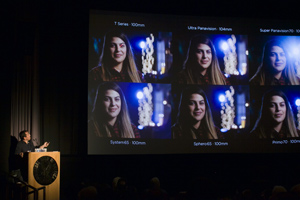
Aesthetic & Technical Considerations for Choosing the Right Lens

Digital Day attendees in Theater Two could hear Panavision’s VP of Optical Engineering Dan Sasaki explain how choices in optics can evoke a unique aesthetic, tailored to a director’s creative vision; and D.P. Larry Fong (Batman v Superman: Dawn of Justice) and VFX D.P. Mark Weingartner (Interstellar) discuss lens mapping and decisions that interplay with lens choices.
Sasaki is an optical engineer, responsible for the development of Panavision’s anamorphic and large format lenses, in addition to many others. His past successes include the flare lenses used by Janusz Kaminski on Steven Spielberg’s Saving Private Ryan, which earned Kaminski an Oscar.
Fong launched his career by shooting music videos, before going on to shoot television pilot’s like Lost with J.J. Abrams and feature films such as Abrams’ Super 8 and Zack Snyder’s Watchmen, and Batman v Superman: Dawn of Justice.
Weingartner’s work can be seen in Christopher Nolan’s Batman films and Inception, the last three Hunger Games films, and last two Twilight films, among others. He also chairs the National Training Committee for the ICG and is a member of the ASC, the Academy’s Visual Effects branch and the Visual Effects Society.
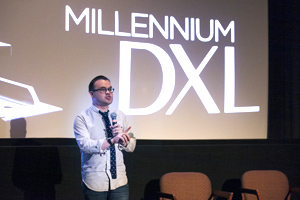
Surviving & Thriving Into the Next Digital Era
The Theater Two audience could also learn how the adoption of UHD, HDR, and WCG technologies is creating a tipping point and changing how content will be distributed and consumed in the near future in this presentation by Light Iron President Michael Cioni.
Cioni founded the post house Light Iron, which was acquired by Panavision in 2015. For more than a dozen years, he has supervised the Digital Intermediate and workflows on hundreds of feature films including Whiskey Tango Foxtrot, Gone Girl, Muppets Most Wanted and The Social Network. He is currently leading the development of Panavision’s newest file-based camera, the 8K Millennium DXL.
Hands-On Demos and Exhibits
In the DGA lobby and Theaters Two and Three, attendees were able to engage in hands-on demonstrations and exhibits such as:
- A demonstration of how the Academy Color Encoding System (ACES) can give consistent color from set to screen and protect productions for the coming High Dynamic Range future.
- A demonstration of SkyPanel LED soft light, and ALEXA Mini and ALEXA 65mm cameras by ARRI.
- A demonstration by Cast & Crew of the latest developments in technology-enabled payroll and digital production-management services.
- A presentation by Feral Dog Productions of the second episode of Defrost, shot stereoscopically in 360 degrees using Nokia’s OZO camera.
- A demonstration of Film Engine’s virtual production tools, and how to sample the future of linear VR storytelling with Code Name: Skyharbor.
- A presentation by the International Cinematographers Guild (ICG)) of some of the most popular and advanced VR camera rigs for a wide range of budgets.
- An exploration Lytro Cinema’s creative tool for cinema and broadcast that provides flexibility on set and in post-production.
- A demonstration by Microsoft HoloLens of how mixed reality allows one to interact simultaneously with both 3D holographic content and the physical world.
- A demonstration of how to enhance pre-production processes with a 20 foot interactive wall coupled with collaborative software from Nureva Span Ideation System.
- A presentation of groundbreaking large-format cinematography by the new Millennium DXL and internally motorized Primo 70 lenses from Panavision.
- A demonstration of how to design a film based on real world cameras and techniques using VR Shot Designer from Tangerine Apps.
- A presentation of how to integrate live-action performances into CGI 3D or stereo 3D scenes by converting the footage into photorealistic CGI objects that can be fully interacted with CGI fluid, fire, and physics simulations in a demo by True3D™.
- A demonstration of extraordinary, story-driven VR experiences from Within and Here Be Dragons.
- A demonstration by Zullavision of how to control the creative process from production to post with a game-changing wireless tablet.
